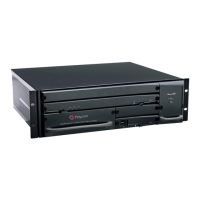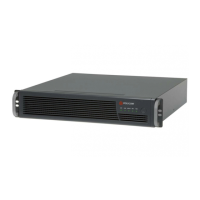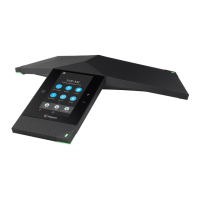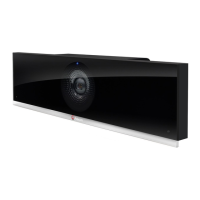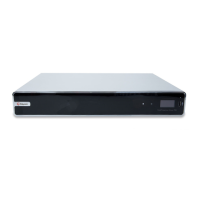Polycom, Inc. A-1
Appendix A
Glossary
This appendix lists the terms and abbreviations that are related to the RealPresence
Collaboration Server 800s, and are commonly used in the Collaboration Server
documentation
.
Abbreviation/
Term
Explanation
AGC Auto Gain Control. A mechanism that regulates noise and audio volume by
keeping the received signal of all participants balanced.
Bandwidth Defines the information carrying capacity of a channel. In analog systems, it is
the difference between the highest frequency that a channel can carry and the
lowest, measured in hertz. In digital systems, bandwidth is measured in bits per
second. The larger a connection's bandwidth, the more data can be transmitted
in a given amount of time, allowing for greater video resolution and more sites
in a conference. For more information, see Line Rate.
Bonding Bandwidth ON Demand INterpolarity Group. A transmission protocol that
aggregates two 64 Kbps B channels to function as one 128 Kbps channel.
When using several BRI channels, Bonding means that only one D-channel
serves all BRI channels, while the remaining D-channels are used for data
transfer.
See also: BRI.
Bps, Kbps Bits and kilobits per second; a unit of bandwidth, which is the amount of data
that can flow during one second over a communications line (using a
transmission medium).
1 Kbps = 1000 Bps
BRI Basic Rate Interface. A type of ISDN connection for transiting data, consisting
of 3 channels: two B-channels (each of 64 Kbps) and one D-channel (16 Kbps).
Carrier A telephone or other company that provides telecommunication transmission
services.
CIF, 4CIF, QCIF Common Intermediate Format, an optional part of the ITU-T's H.261 and H.263
standards. CIF specifies 288 non-interlaced luminance lines, that contain 176
pixels. CIF can be sent at frame rates of 7.5, 10, 15, or 30 per second. When
operating with CIF, the amount of data to transmit cannot exceed 256 K bits
(where K equals 1024).The CIF video format has the capacity to transmit video
images of 352x288 pixels at 36.45 Mbps and 30 frames per second. A 4CIF
format has four times the capacity of CIF; QCIF has quarter the capacity of CIF.
Codec Coder-decoder. A device that converts voice and video into digital code, and
vice versa. Refers to the endpoint video camera and video board that are used
for video conferencing.
